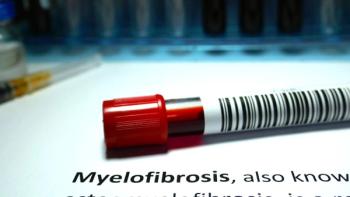
Delving into the Evaluation of JNJ-1900 Trial for Lung Cancer Treatment
Dr. Jared Weiss sat down for an interview to discuss a trial evaluating JNJ-1900, an immune-stimulating radiation sensitizer, in those with lung cancer.
JNJ-1900, an immune-stimulating radiation sensitizer designed to enhance the effects of hypofractionated radiation in small, targeted areas, is being investigated in a phase 1 study for patients with lung cancer, according to Dr. Jared Weiss, who went on to say that this approach may have the potential to benefit patients.
To further discuss the topic, Weiss sat down for an interview with CURE where he delved into the rationale for evaluating JNJ-1900 as a radioenhancer in lung cancer treatment, as well as expands on how the agent differs mechanistically from other radiosensitizers.
Weiss is the section chief of Thoracic and Head/Neck Oncology, as well as a professor of Medicine in the Department of Medicine, Division of Oncology, at the UNC School of Medicine, UNC Lineberger Comprehensive Cancer Center, located in Chapel Hill, North Carolina.
Transcript:
CURE: A phase 1 study is investigating JNJ-1900. Can you describe the rationale behind using JNJ-1900 as a radioenhancer in lung cancer treatment, and how it differs mechanistically from other radiosensitizers?
Weiss: Traditional radiation for lung cancer is given in two main contexts: either you have a spot that's a particular problem, and you're giving the radiation to palliate, or you're giving it for unresectable disease with a goal of cure. In the former situation, a classic example might be a painful bony metastasis where the goal of the radiation isn't to cure the person or even extend survival, but rather to relieve pain at that site. Another example might be a patient experiencing cough or trouble breathing due to compression of a central airway, where the goal is purely palliative: to open that airway for comfort. [In contrast], with unresectable stage three disease, [the aim] is to cure the patient.
JNJ-1900 is designed to work with hypofractionated radiation. To translate that into plainer English, when you give curative-intent radiation to a big area in the chest, it's administered over seven weeks. The total dose is broken up over six-plus weeks for safety, which is known as traditional fractionation. There's a newer form of radiation, sometimes referred to by brand names like CyberKnife, or more broadly as stereotactic body radiotherapy (SBRT) or hypofractionated radiation. Whatever you want to call it, this is the type of radiation that JNJ-1900 is intended to work with, when you deliver a burst of radiation to a very small, focal area in one or a very small number of sessions. Therefore, you wouldn't use JNJ-1900 to treat a huge central tumor mass; you would treat a much smaller area.
Thus far, much of the data on JNJ-1900 are really centered around its use more as an immune-stimulating agent than as a traditional radiation sensitizer like chemotherapy. While it is inherently a very potent radiation sensitizer — meaning the area you deliver a small dose of hypofractionated radiation will be intensely affected — what's truly special about JNJ-1900 isn't just its radiation sensitization, but the downstream effects of that sensitization for immune stimulation.
Transcript has been edited for clarity and conciseness.
For more news on cancer updates, research and education,





